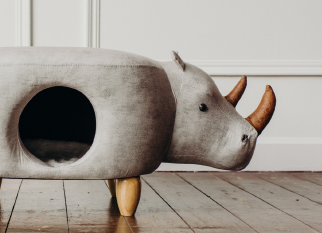What are the requirements for the protection design of the insulation layer of the industry extension cord
Industrial Extension Cords occupy a core position in the industrial and construction fields. The design and material selection of their insulation layer are the key to ensuring safe, effective and reliable power transmission. High-quality insulation layers can not only effectively prevent current leakage and short circuits, but also provide necessary protection for equipment and operators to avoid electric shock and other potential dangers.
Material Selection and Performance
Heat Resistance
The heat resistance of the insulation layer material is crucial, especially for applications in high temperature environments. Common insulation materials such as polyvinyl chloride (PVC), polyolefin (PO) and thermoplastic elastomer (TPE) must pass high temperature tests to ensure that there is no insulation performance degradation or deformation under high temperature conditions. Selecting materials with high heat deformation temperature is a basic requirement to ensure the safety of extension cords, which can effectively guarantee normal use in extreme temperature environments.
Low Temperature Resistance
In cold working environments, insulation materials may become brittle, resulting in insulation failure. Therefore, the design of the insulation layer of the extension cord must take into account low temperature resistance and select materials that remain flexible under low temperature conditions. Such materials can effectively prevent physical damage caused by sudden temperature drops and ensure the stable operation of extension cords under extreme climate conditions.
Chemical resistance
In some industrial applications, extension cords may come into contact with chemicals such as oils, solvents, acids and alkalis, so the material of the insulation layer must have good chemical resistance to prevent the corrosion of the insulation layer by chemicals and ensure its long-term stability and safety.
Waterproof and dustproof design
Waterproof performance
Industrial extension cords are often used outdoors or in humid environments, so the waterproof performance of the insulation layer is particularly important. The insulation material should have excellent waterproof properties, which is achieved through sealing design and the use of waterproof materials. The insulation layer design of many extension cords reaches IP65 or higher protection level, effectively preventing the intrusion of moisture and ensuring the safe operation of the equipment under humid conditions.
Dustproof performance
In addition to waterproofing, the dustproof performance of the insulation layer cannot be ignored. In a dusty industrial environment, dust and particulate matter may affect the insulation layer and reduce its insulation effect. Therefore, the design of the insulation material should have dustproof properties to avoid dust accumulation, so as to ensure that good insulation performance can be maintained in harsh environments.
Strike and wear-resistant design
Strike resistance
During use, the extension cord may be subjected to mechanical shock or accidental collision, so its insulation layer must have excellent impact resistance. The use of high-strength, impact-resistant materials can effectively prevent the insulation layer from being damaged by external forces, thereby reducing the risk of electrical accidents.
Wear resistance
In industrial environments, extension cords often rub against other equipment or the ground, so the wear resistance of the insulation layer is particularly important. The insulation layer should be made of wear-resistant materials or designed as a multi-layer structure to enhance its durability in high-wear environments. This design not only extends the service life of the product, but also improves its adaptability in complex environments.


 English
English русский
русский 中文简体
中文简体 Español
Español













